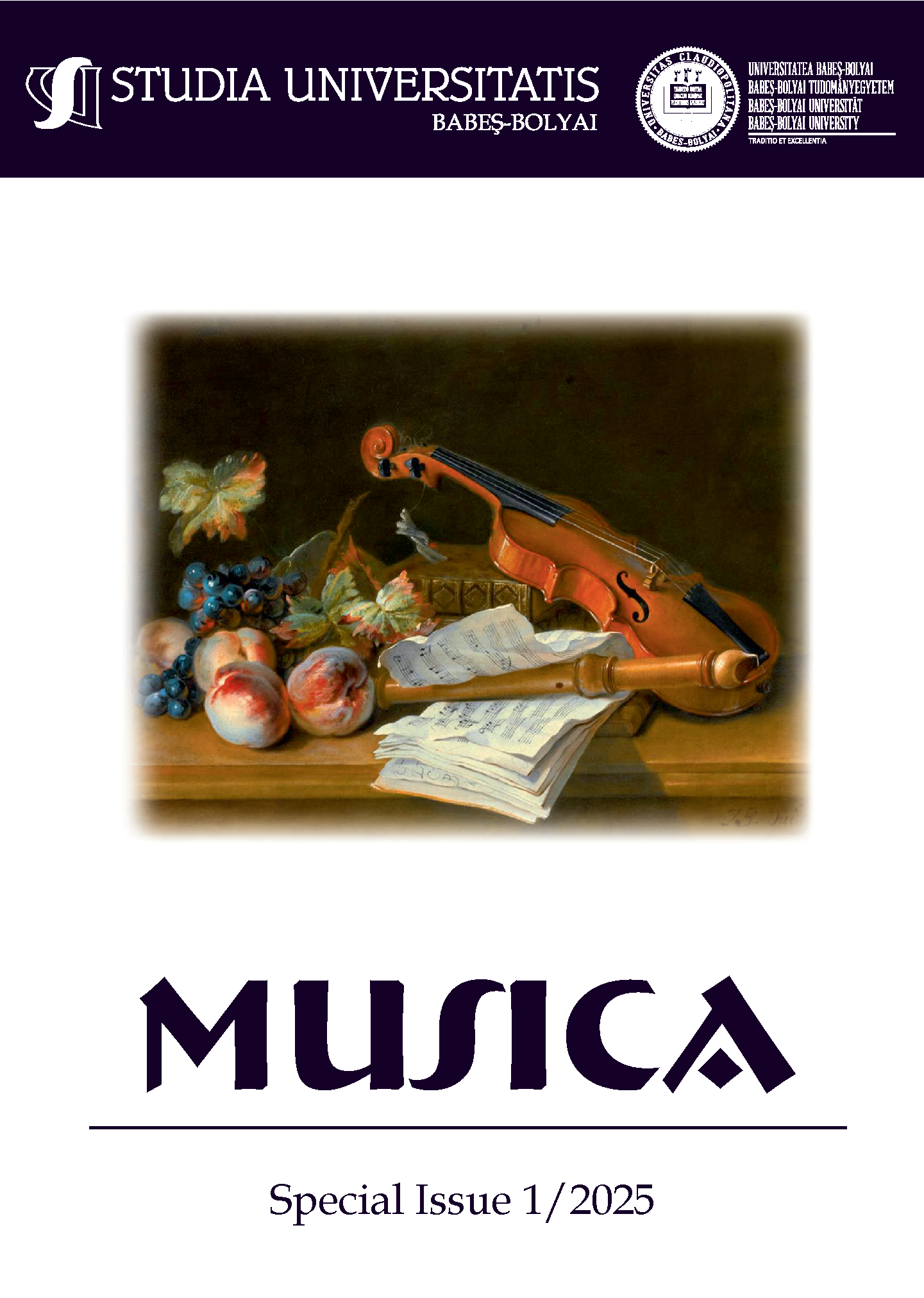THE ROLE OF MUSICAL CONSTRUCTION IN APPROACHING AND RENDERING OF OP. 52 LIEBESLIEDER-WALZER BY JOHANNES BRAHMS
DOI:
https://doi.org/10.24193/subbmusica.2025.spiss1.10Keywords:
Brahms, Waltzes, Love Songs, Musical Construction, Conducting ApproachAbstract
In this article, I have outlined several aspects related to the musical structure and the conducting approach to the Brahms work for its interpretation. We adapted our interpretive concept to what the waltz means, and in the 18 pieces written in ternary meter, I presented some rhythmical-melodic formulas specific to the waltz. A specific aspect of Brahms’s music was the use of hemiolas, both in the vocal/choral part and in the piano accompaniment, which do not disrupt the flow of the musical discourse. In this regard, I proposed my own scheme for the articulation of each piece among the 18 waltzes, constituting an important element of my interpretative vision.
References
Brahms, Johannes, Sämtliche Werke, Band 20, Ed. Breitkopf & Härtel, Leipzig, op.52, 1926-27.
Gâscă, Nicolae, Interpretarea muzicii corale (Interpretation of Choral Music), Editura Junimea, Iaşi, 2004.
Golcea, Ioan, Badea, Florin, Determinări teoretice ale cântului în ansamblu (Theoretical Determinations of Ensemble Singing), Editura Transversal, Târgoviște, 2010.
Marin, Constantin, Arta construcţiei şi interpretării corale (The Art of Choral Construction and Interpretation), Doctoral Thesis, „G. Dima” Conservatory of Music, Cluj-Napoca, 1984.
Oarcea, Ioan, Cântarea corală (Choral Singing), Editura MediaMusica, Cluj-Napoca, 2010.
Olsen, Glen, The Liebeslieder Walzer, op. 52, of Johannes Brahms: Rhythmic and Metric Features, and Related Conducting Gestures, Choral Journal, 42.2,2001, Olsen-CJ-Sept-2001.pdf
Para, Ciprian, Demersul dirijoral ca factor de împlinire a unei concepții interpretative (The conducting approach as a factor in fulfilling a interpretive conception), Doctoral Thesis, „Gh. Dima” Music Academy, Cluj-Napoca, 2003.
Para, Ciprian, Concepția interpretativă în demersul dirijoral (Interpretive Concept in the Conducting Approach), Editura MediaMusica, Cluj-Napoca, 2015.
Ștefănescu, Ioana, Arta lui Brahms din perspectiva secolului XX (Brahms’ art from a 20th century perspective), Doctoral Thesis, “Gh. Dima” Conservatory of Music, Cluj-Napoca, 1974.
Timaru, Valentin, Stilistică Muzicală (Musical Stylistics), Editura MediaMusica, vol. I, Cluj-Napoca, 2014.
Downloads
Published
How to Cite
Issue
Section
License
Copyright (c) 2025 Studia Universitatis Babeş-Bolyai Musica

This work is licensed under a Creative Commons Attribution-NonCommercial-NoDerivatives 4.0 International License.



